1864-1866 Thomas Lye junior
The stables at Lambourn House were first built and occupied in 1864 by Thomas Lye junior when it had just 20 stables. This did not increase to 30 until 1931, and there was a further increase to 30 in 1959, while at the end, in 1983 it had 45 boxes. Thomas Lye was born in Middleham in 1830, som of the lightweight Middleham jockey Thomas Lye. He learnt to ride at an early age, although he did not make his name as a jockey and became assistant to John Dawson at East Ilsley in 1860. When John Dawson departed for Warren House stables in Newmarket, Lye took charge of the string of 10 horses at East Ilsley. By 1864 he had made the short trip to Lambourn, taking over the stables at Lambourn House where he had 11 horses in his first year. His string gradually increased to 13 in 1865 and 17 in 1866, but tragically on 27th March 1866 he died aged just 36. His father had outlived him and Lambourn House was next occupied by Fred Bates as a second yard.
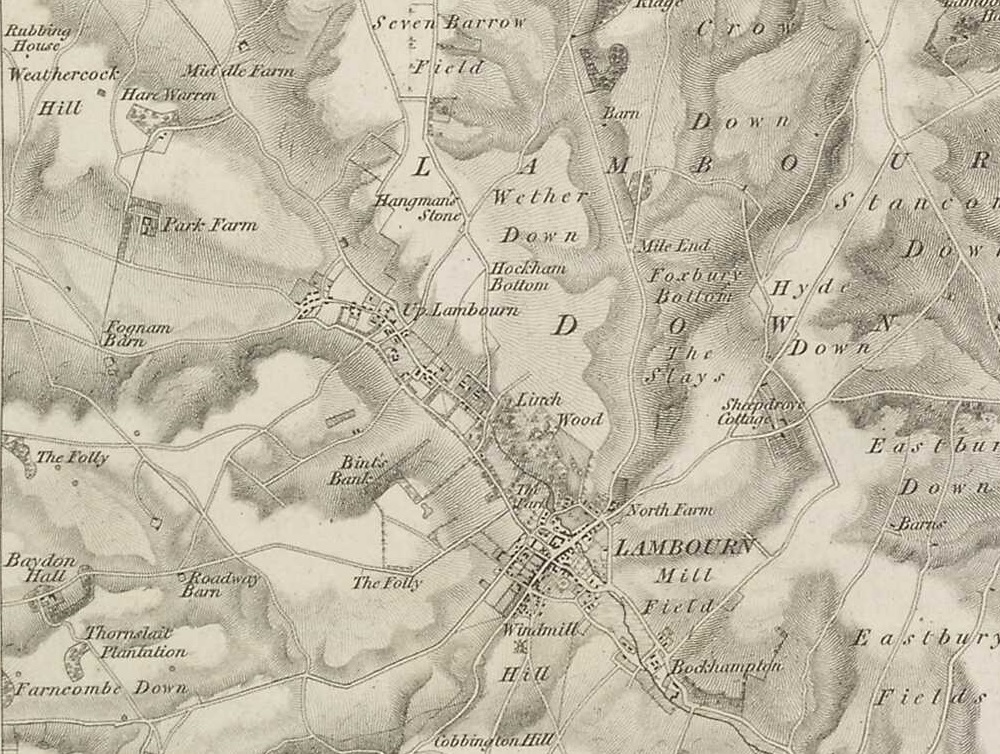
1868-1872 Fred Bates
Frederick Bates, born in Nottingham in August 1840, was born into a horse loving family, his father kept a livery stable, so it was no surprise that he joined a racing stable after completing his education. He became apprentice to Tom Dawson at Tupgill stables, Middleham and married Tom's daughter, the marriage being blessed with a son, Harry Dawson Bates who followed his father into the training ranks. His first victory of note was on 20th October 1853 when partnering The Jealous One to victory at Richmond, and his low riding weight meant that he was in demand in all of the handicaps. He won the 1855 Cesarewitch on Mr Sykes (15/2), beating Crown Pigeon and Poodle and, in the same year, was aboard The Wild Huntsman when winning the Great Yorkshire Handicap at Doncaster. Another notable success was chalked up 2 years later when Gathercole won the 1857 Ayr Gold Cup, but by 1862 he had hung up his riding boots and turned his hand to training.
Frederick Lynham, born on 23rd November 1855 in Somerset, began his working life in the late 1860s as apprentice to Joseph Saxon at Saxon House Stables. In 1870 he won the Cambridgeshire aboard Adonis, but by then Joseph Saxon had died and the horse, owned by Count Renard, was trained by Charles Hayhoe. Another notable riding success was in 1874 when he was victorious on Morning Star in the Birmingham Grand Annual. By then he was also training, having launched his training career in Lambourn at Lambourn House in 1873, training for Mr G F Bentley. In December 1874 he also used stables formerly occupied by Rous, and began training for Mr Downe. He later moved to Saxon House stables, one which he was very familiar with having ridden there during his apprenticeship, training for the likes of Lord De Clifford, Sir John D Astley and Lord Rossmore.
James Forshaw Peace was born in Delamere, Cheshire in 1852 and made his way to the Lambourn area in 1883 where he and his wife Susan Toke Peace, born in 1840, resided at Lambourn House. In 1890 they are recorded as being at The Plough at Eastbury along with his sister, Jane Elizabeth Toke Thorp and their mother. He left Eastbury in 1892 and lived at a number of locations in Lambourn for the next 16 years, including Lambourn House, College House, and Windsor Cottage, which he leased from the Kennard family, but he will be best remembered for building Delamere House on the Baydon Road, having purchased 2 cottages before converting them into a much grander house, and adding 30 stables. He was a wealthy man, purchasing 245 acres in the Lambourn area, including 100 acres of arable land and the Crowdown Gallops for £1,200. In 1899 he purchased Ronehurst in Upper Lambourn for £1,050, as well as the Farncombe Bottom Gallops off the Baydon road. He trained for a number of prominent, wealthy owners, including Lord Newton, Lord Kesteven and Sir John Thursby, and he particularly liked having a tilt at the ring at the old Newton-Le-Willows racecourse until it closed at the end of the 1898 season. Amongst his best horses were The Tartar, True Art, Red Heart, St Noel, Canonbury and Ranald McEagh. He hit the headlines on 25th July 1896 when training 5 winners in a day at the Newton Summer meeting, winning with Carsethorn, Larkhill, Palmy, Polytheist and Pollyduck. Remarkably, he repeated the same feat 2 years later at the same racecourse and same Summer Meeting on 12th July 1898, winning with St Tudno, Marasquin, Superb, Trevor and Foxstones. James retired in 1902, and he and his wife returned to the Cheshire area to enjoy their retirement. She died in 1907, at which point he sold the Farncombe Bottom Gallops, and he died at 58 Liverpool Road, Chester in March 1908 aged 56, leaving a will of £15,141.
25th July 1896 Grand Stand Welter Handicap at Newton-le-Willows CARSETHORN 2/1 owned by L H Pilkington, trained by J F Peace and ridden by Calder
25th July 1896 Lyme Park Stakes at Newton-le-Willows LARKHILL 1/2 fav owned by L H Pilkington, trained by J F Peace and ridden by Finlay
25th July 1896 Juvenile Selling Stakes at Newton-le-Willows PALMY 5/2 owned by Mr Legge, trained by J F Peace and ridden by Calder
25th July 1896 Newton Cup at Newton-le-Willows POLYTHEIST 4/1 owned by Captain L H Jones, trained by J F Peace and ridden by Finlay
25th July 1896 St Helens Plate at Newton-le-Willows POLLYDUCK Evens fav owned by G F Fawcett, trained by J F Peace and ridden by Finlay
12th July 1898 Maiden Plate at Newton-le-Willows ST TUDNO 11/8 fav owned by L H Pilkington, trained by J F Peace and ridden by Finlay
12th July 1898 Mile Selling Plate at Newton-le-Willows MARASQUIN 5/2 owned by R A Harper, trained by J F Peace and ridden by Finlay
12th July 1898 Warrington Handicap at Newton-le-Willows SUPERB 10/1 owned by R A Harper, trained by J F Peace and ridden by Lofthouse
12th July 1898 Newton Bridge Handicap Plate at Newton-le-Willows TREVOR 5/2 owned by Sir John Thursby, trained by J F Peace and ridden by F B Black
12th July 1898 Prescott Plate at Newton-le-Willows FOXSTONES 1/2 fav owned by Sir John Thursby, trained by J F Peace and ridden by Finlay
James Chandler, born in Reading in 1852, was better known as a National Hunt jockey based at Bourton-on-the-Hill than a Flat jockey, only riding 3 winners on the Flat. He began training in Gloucestershire, but in 1877 he relocated to Woodcote Lodge, on the Dorking Road in Epsom, at that time owned by Mr Case Walker. He left Epsom in 1882 bound for Houghton Down, and from there, in 1889, he took charge at Lambourn House. For 2 years he was private trainer to James Peace, but then decided to train publicly and by 1894 his string was up to 24.
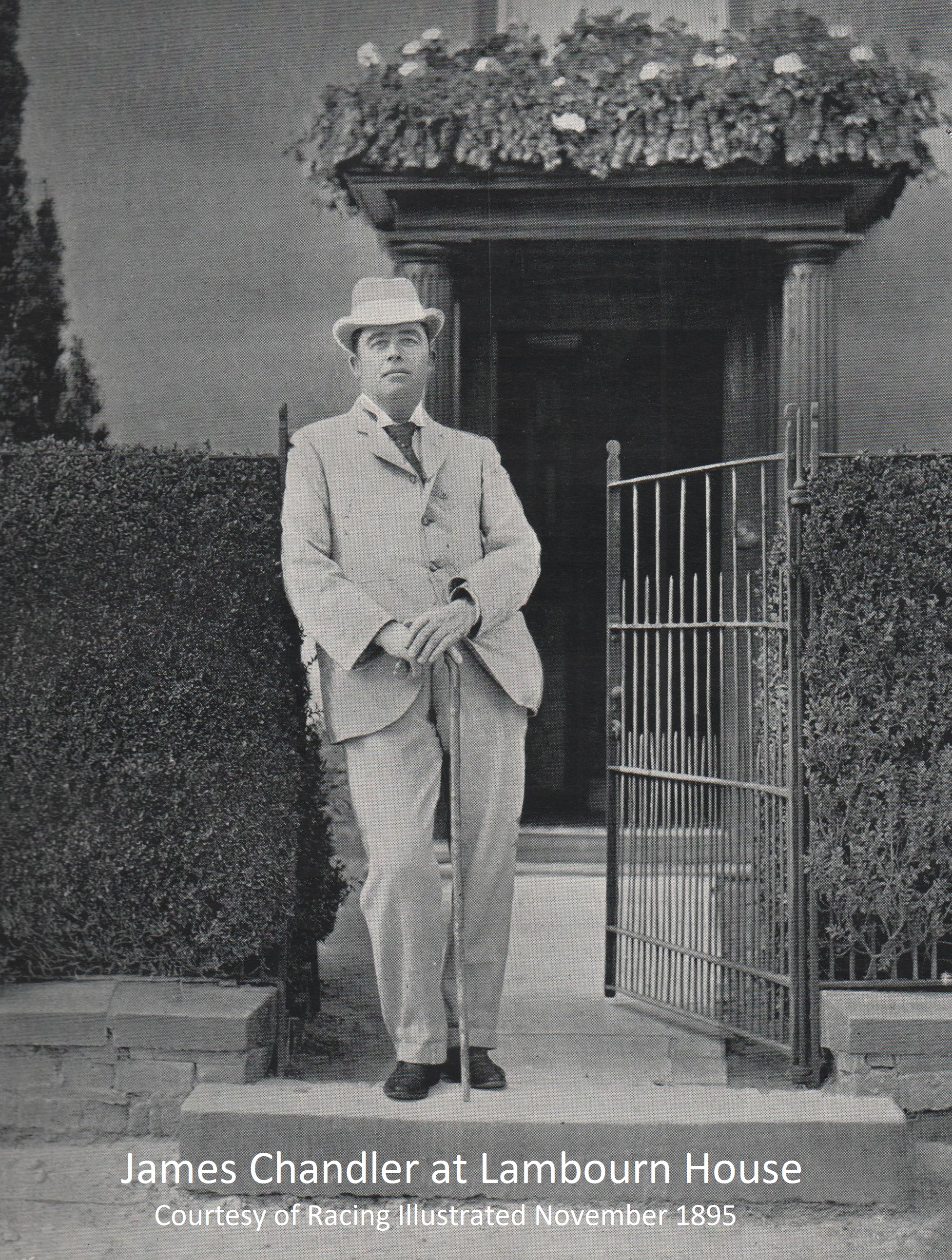
His best horse by far was Quintessence (SR 1847) who won the 1903 1000 Guineas, also winning the Molecomb Stakes and Park Hill Stakes. Chandler also won the 1888 Wokingham Stakes with Annamite, the 1889 and 1894 Jubilee Stakes with Amphion and Avington respectively, both owned by Sir William Throckmorton, the 1890 Hardwicke Stakes with Amphion, who also rounded off 1890 with victory in the Champion Stakes. Towards the end of his career he became depressed as his string dwindled, and on Friday 11th May 1906 he took out his string for exercise as normal but then went missing. He was found in a plantation he rented at Windmill Downs with his throat cut and a blood-stained razor by his side. He was just 54 years old and was buried in Upper Lambourn.
1888 Wokingham Stakes at Royal Ascot ANNAMITE 10/1 owned by Sir William Throckmorton, trained by James Chandler and ridden by Bradbury
1889 Jubilee Stakes at Kempton AMPHION 100/8 owned by General Byrne, trained by James Chandler and ridden by Tom Cannon
1890 Hardwicke Stakes at Royal Ascot AMPHION 6/1 owned by General Byrne, trained by James Chandler and ridden by Tom Cannon senior
1890 Champion Stakes at Newmarket AMPHION 4/7 fav owned by General Byrne, trained by James Chandler and ridden by Tom Cannon senior
1893 Duke of York Stakes at York AVINGTON 85/40 fav owned by Sir William Throckmorton, trained by James Chandler and ridden by Gough
1894 Jubilee Stakes at Kempton AVINGTON 9/1 owned by Sir William Throckmorton, trained by James Chandler and ridden by Calder
1902 Molecomb Stakes at Glorious Goodwood QUINTESSENCE 8/11 fav owned by Lord Falmouth, trained by James Chandler and ridden by Herbert Randall
1903 1000 Guineas at Newmarket QUINTESSENCE (SR 1847) 4/1 owned by Lord Falmouth, trained by James Chandler and ridden by Herbert Randall
1903 Park Hill Stakes at Doncaster QUINTESSENCE 9/4 owned by Lord Falmouth, trained by James Chandler and ridden by Herbert Randall
1906-1911 Charles Florence Young
Charles Florence Young, born into a wealthy brewing family in Wandsworth, London on 16th May 1865, was educated at Harrow and Trinity College, Cambridge. He was a keen racing man, registering his colours by 1890 when he began training at Royston. In January 1903 he teamed up with his brother Henry and they jointly leased College House in Lambourn, remaining there until the end of 1905. In January 1906 the pair transferred their string of 16 horses to Lambourn House. Gradually the numbers of winners each season increased, 5 winners in 1907, 11 in 1908 and by 1911 they gained 14 winners. In December 1911 Charles decided to train apart from his brother and moved to Kirriemuir, Links Road, Epsom where he continued to hold a Flat licence until 1917, the War interrupting his career when he served in the ASC. Between 1915 and 1917 he trained at Tangleycroft, Burgh Heath Road in Epsom.
1912-1930 Henry Thomas Loud Young
Henry Thomas Loud Young, part of the Youngs Wandsworth Brewing Company, was born on 10th February 1881 in Kensington, London. Unlike his brother, he was educated at the other great public school Eton, and then followed his brother to Trinity College, Cambridge. He teamed up with his older brother Charles to train at College House and Lambourn House, but did not have his own licence until 1912. When Charles left for Epsom in 1911 Henry continued at Lambourn House as an owner trainer until 1916, serving then in the ASC where he reached the rank of Captain. After the War he resumed his training career at Lambourn House until 1930, although he did have a break in 1923. In February 1930 he purchased the magnificent training yard at Danebury and continued his training career, dying there on 27th September 1957.
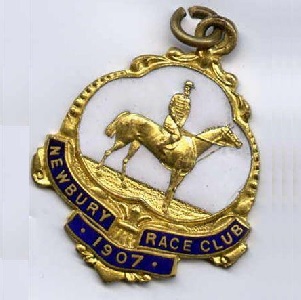
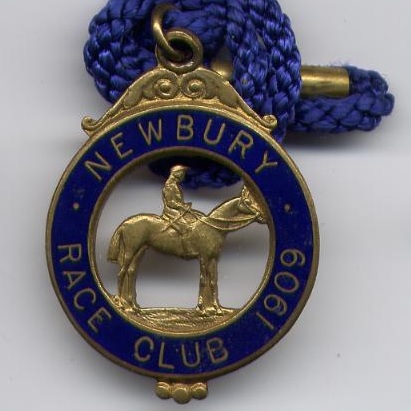
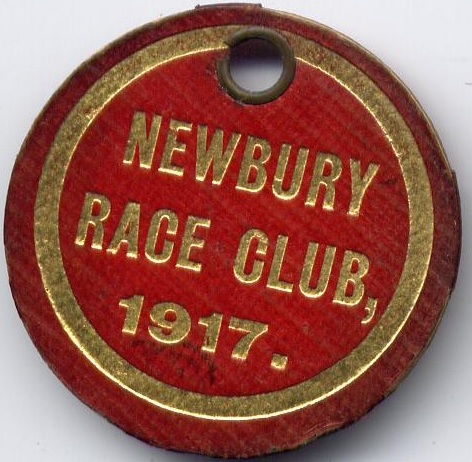
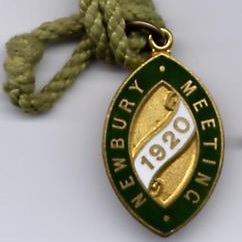
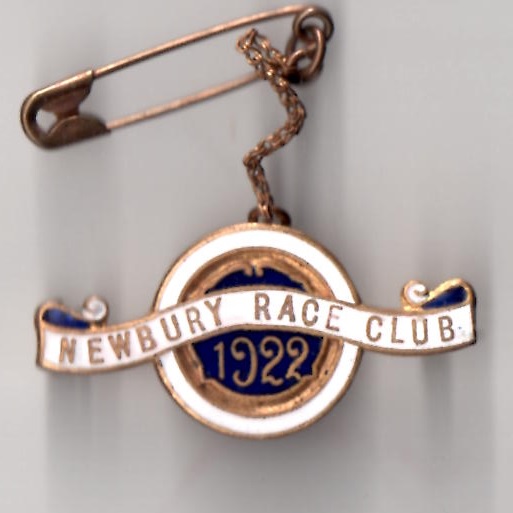
Captain Oswald Marmaduke Dalby Bell was born in Australia and had a passion for horses and ponies. He travelled to India and was famous for importing two ponies from his native homeland to India, Idle Bell and First Bell, both winners of the Lucknow Civil Service Cup and Eclipse Pony Stakes in Calcutta. He then travelled to England where he became an extremely successful racehorse trainer, sending out scores of winners from his Stork House Stables, including 1928 Epsom Derby winner Felstead (SR 1923) at 33/1. Felstead did not show a great deal as a 2-year-old, but won a Newbury maiden at 3 and then performed with credit in the 2000 Guineas, finishing sixth behind Flamingo (SR 1969). It was only when he moved up a distance that he began to show his true ability, winning the Davis Stakes at Hurst Park, before winning the Derby. Ossie, who also used the Delamere House Stables in Lambourn as a second yard between 1919 and 1932, specialized in training sprinters, notching his second Royal Ascot success in the 1922 King Stand Stakes with King Sol ridden by champion jockey Steve Donoghue., having won the 1919 Queen Alexandra Stakes with St Eloi partnered by Brownie Carslake. In all he trained 11 Royal Ascot winners, 7 seconds, 11 third placed horses, earning 85th place on the all-time Royal Ascot Trainers list compiled in 2022. In 1922 and 1923 Ossie trained Flint Jack, owned by G Plevin, to win back-to-back Ebor's at York. Indeed, York was a particularly favourable racecourse for Ossie, winning the Nunthorpe on no less than 4 occasions, firstly in 1926 with Highborn II, who repeated that success the next year, then again in 1933 with Concerto, and finally in 1937 with Ipsden, the first 3 wins were for loyal owner and friend Sir Hugo Cunliffe-Owen, the last for Lady Ludlow. Harry Wragg became stable jockey in 1928 and the pair enjoyed much success, not only winning the 1928 Derby, but later the 1000 Guineas and Oaks. In 1934 Ossie married Lady Beaumont, widow of Sir Sammy Beaumont, nicknamed Rubber, the sporting Baronet who died in Lambourn on 1st October 1933. Between 1931 and 1947 Bell also used Lambourn House as a second yard when the House was owned and lived in by Mr & Mrs Charles Cooling and their daughter E Cooling. Ossie achieved further Classic success in 1938 when Rockfel (SR 2063) won the 1000 Guineas and followed up the victory in the Oaks. Earlier in the season the filly had won the inaugural Princess Elizabeth Stakes at Epsom. The July Cup at Newmarket was another sprint race which Ossie won on a number of occasions, notably in 1927 with Highborn II, in 1932 with Concerto, and finally in 1941 with Comatas. Whether or not Ossie felt his Classic victories gave him most pleasure is unknown, but he must surely have celebrated his capture of the 1941 Ascot Gold Cup with Finis as one of the highlights of his glittering career. Captain Bell's best year, in monetary terms, was 1938 when 32 winners netted £33.402, while his best season by number of winners was his Derby winning year when he achieved 50 winners earning £23,499. He retired at the end of the 1947 season and died on 25th June 1949.
William Payne snr, born at Southminseter, Essex on 23rd November 1884, was educated at Maldon Grammar School, Essex and enjoyed hunting from a very early age. He became a professional jockey in 1903, riding his first winner in that year at Chelmsford, and by 1911 was crowned Champion National Hunt jockey. He launched his training career at Farthingstone, Northamptonshire before transferring to Epsom, but in October 1947 he replaced the newly retired E J R Bennett at Seven Barrows. Early in his first season at Seven Barrows Roscoff, 3rd in the Cesarewitch, and Firemaster, joined the stables, increasing the string from the 40 Bill had brought with him from Epsom. Soon afterwards R Bennett decided to send his horses to Payne, and Bill also purchased a number of yearlings for Lord Abergavenny. His son, also called William, was born at Bugbrooke, Northants on 25th July 1910 and also became a National Hunt jockey, riding his first race under rules at Gatwick in 1924 when aged 14. In 1952 he joined his father at Seven Barrows where their principal owners were Lord Abergavenny and the Duchess of Norfolk. On Thursday 29th September 1955 the pair moved from Seven Barrows to Lambourn House stables, at which point Bill Payne senior retired and passed his training licence to his son.
1959-1977 Freddie Maxwell
William Farnham Maxwell, universally known as Freddie, was born into a hunting family on 6th June 1905 at Birr, County Offaly, Ireland and was always likely to carve out a career in racing. He travelled to England to the Wroughton, Wiltshire stables of Aubrey Hastings in 1923, riding his first winner on Pine Bluff in the Beginners Hurdle at Plumpton on 5th December 1923 aged 18. He rode in 4 Grand Nationals, firstly in 1931 on Georginatown 20/1, then in 1932 on Ace II 100/1, again in 1935 on Slater in 1935, and finally in 1937 on Tapinos 401, but he failed to complete the course on all four. He launched his training career in Ireland in 1938, sending out his first winner, Irish Salmon, at Down Royal on 15th March 1939. During the War he served in the RAF, but once the War had ended he resumed his training career at Wiseton, Doncaster before moving to Retford, Nottinghamshire. In the early 1950s he served as assistant to Evan Williams at Kingsclere, resuming his own training career at Blewbury in 1954. In 1959 he transferred his large string to Lambourn House, taking over from Major W J Payne. He spent 18 years at Lambourn House and one of his best horses came early on in his time at Lambourn House. In 1961 Pandofell won the Queen's Prize and followed up with victories in the Yorkshire Cup, Ascot Gold Cup and Doncaster Cup. In 1960 he won the Portland Handicap at Doncaster with Acconpanist, while in 1963 he landed the Northumberland Plate with Horse Radish. Freddie was good with long-distance Cup horses, training Fighting Charlie to success in the 1965 and 1966 Ascot Gold Cup. In 1965 he guided Merry Madcap to victory in the July Cup at Newmarket, and towards the end of his career he trained Cawston's Pride to win all 7 of two-year-old her races, notably the Queen Mary at Ascot, the Molecomb Stakes at Goodwood, the Lowther Stakes at York and the Cornwallis Stakes at Ascot. He retired in 1977 and died on 2nd June 1991 at the age of 85.
1960 Portland Handicap at Doncaster ACCOMPANIST 7/1 owned by Mrs Alan Palmer, trained by Freddie Maxwell and ridden by D W Morris
1961 Queen's Prize at Kempton PANDOFELL 100/8 owned by H Warwick Daw, trained by Freddie Maxwell and ridden by Jimmy Lindley
1961 Ascot Gold Cup at Royal Ascot PANDOFELL 100/8 owned by H Warwick Daw, trained by Freddie Maxwell and ridden by Lester Piggott
1961 Yorkshire Cup at York PANDOFELL 11/4 owned by H Warwick Daw, trained by Freddie Maxwell and ridden by Lester Piggott
1961 Doncaster Cup PANDOFELL 9/4 jt fav owned by H Warwick Daw, trained by Freddie Maxwell and ridden by Lester Piggott
1963 Northumberland Plate at Newcastle HORSE RADISH 8/1 owned by N H Wachman, trained by Freddie Maxwell and ridden by Peter Robinson
1965 Ascot Gold Cup at Royal Ascot FIGHTING CHARLIE 6/1 owned by Lady M Bury, trained by Freddie Maxwell and ridden by Lester Piggott
1965 July Cup at Newmarket MERRY MADCAP 100/8 owned by Mrs H Frelinghuysen, trained by Freddie Maxwell and ridden by Ron Hutchinson
1966 Ascot Gold Cup at Royal Ascot FIGHTING CHARLIE 15/8 fav owned by Lady M Bury, trained by Freddie Maxwell and ridden by Greville Starkey
1970 Queen Mary at Royal Ascot CAWSTON'S PRIDE 2/1 owned by Len Hall, trained by Freddie Maxwell and ridden by Brian Taylor
1970 Molecomb Stakes at Glorious Goodwood CAWSTON'S PRIDE 1/5 fav owned by Len Hall, trained by Freddie Maxwell and ridden by Brian Taylor
1970 Lowther Stakes at York CAWSTON'S PRIDE 8/100 owned by Len Hall, trained by Freddie Maxwell and ridden by Brian Taylor
1970 Cornwallis Stakes at Ascot CAWSTON'S PRIDE 4/5 fav owned by Len Hall, trained by Freddie Maxwell and ridden by Brian Taylor
1971 1000 Guineas trial at Ascot CAWSTON'S PRIDE owned by Len Hall, trained by Freddie Maxwell and ridden by Brian Taylor
1971 Yorkshire Cup at York ALTO VOLANTE 4/1 owned by V Barclay, trained by Freddie Maxwell and ridden by Brian Taylor
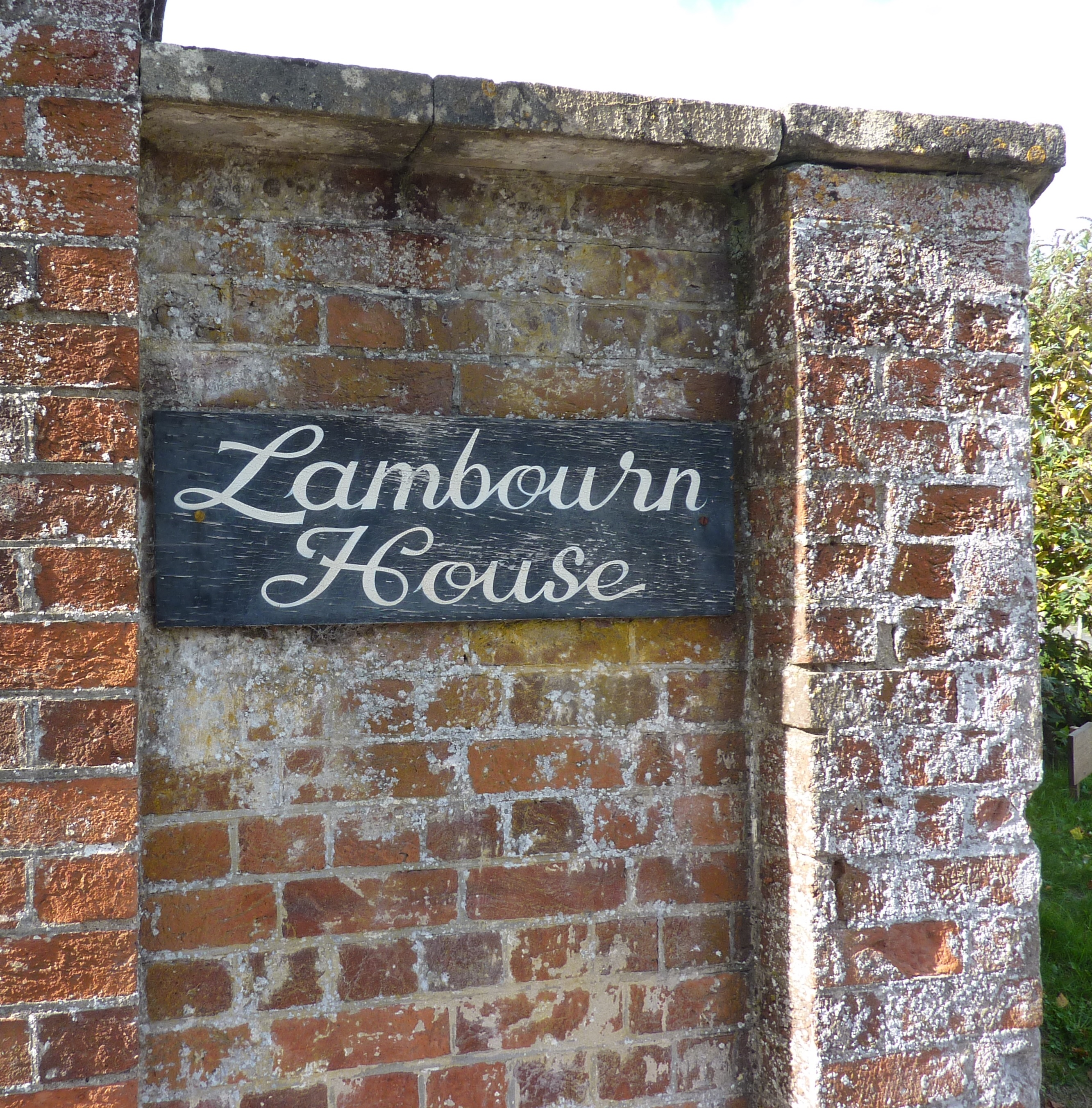
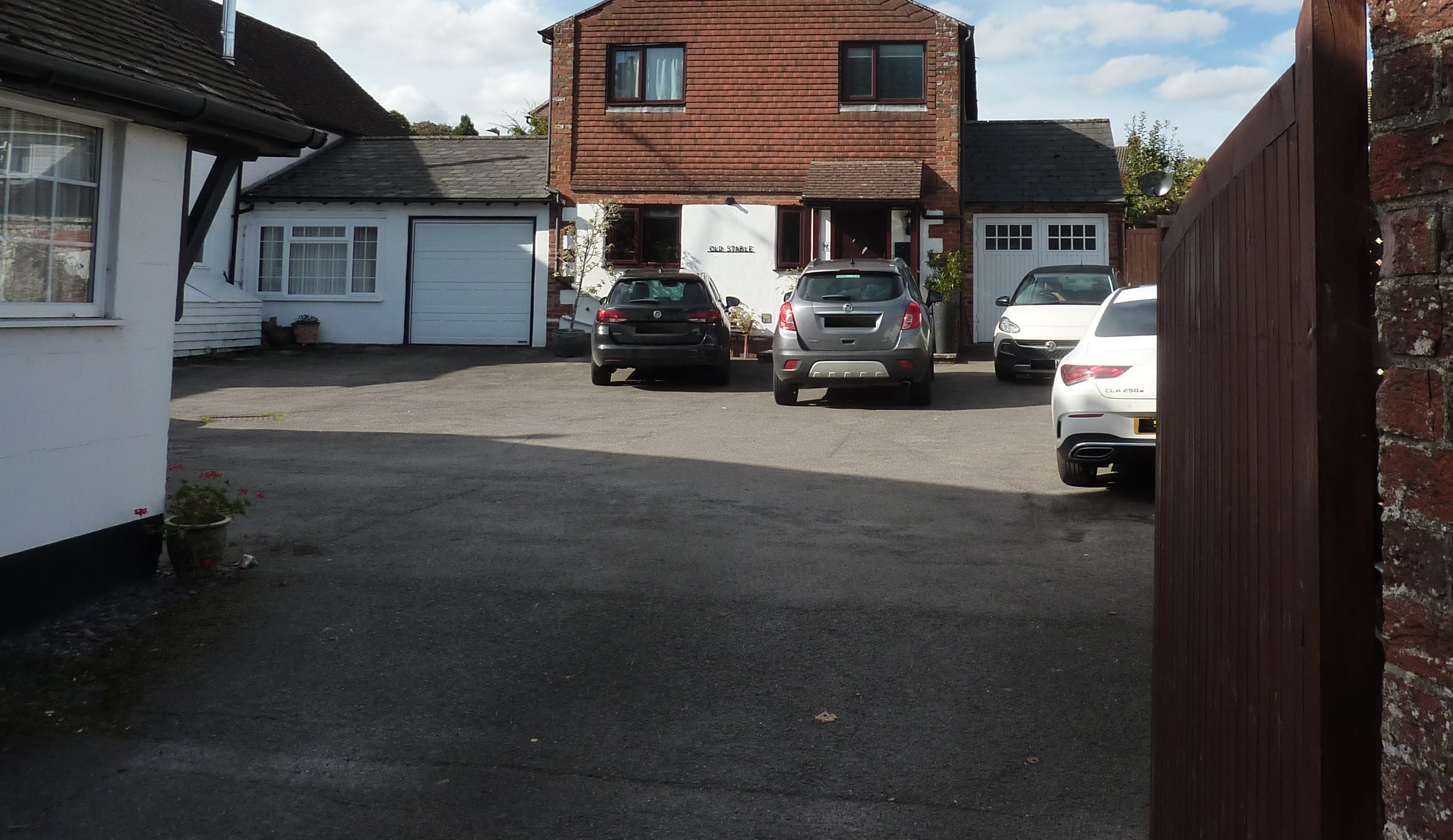
David Louis Hanley, born on 25th August 1928, was the son of jockey and trainer Sam Hanley based at Seabright Stables, Epsom. David joined Epsom trainer Walter Nightingall as an apprentice and went on to have a successful riding career for 14 years beginning in 1944. He had to wait for almost a year before partnering his first winner, Shy Anitor on 19th October 1945 at Worcester, and then was called up for National Service which he completed by December 1948. After his riding career finished in 1958 he assisted his father before taking over the licence in 1960 and later trained at Ermin Stables, Lambourn Woodlands. In 1963 he won the Wokingham Handicap at Royal Ascot with Marcher, completing the double in the Portland Handicap at Doncaster. By 1967 Hanley transferred to Delamere House Stables where he remained for a decade. During his time at Delamere he pulled off a gamble with Big Hat who won the 1969 Ebor at York at 40/1, having already landed the Newbury Spring Cup with Emerilo. Towards the end of his time at Delamere he won the 1975 Cambridgeshire with Lottogift, later winning the 1976 Bunbury Cup at Newmarket. In 1978 he moved back to Ermin Street Stables, while in 1981 he inhabited Lambourn House stables. His final training period was spent at Middle Pond, Lambourn Woodlands between 1984 and 1989. David died on 2nd June 2008 aged 79.
1963 Portland Handicap at Doncaster MARCHER 100/6 owned by R Zelker, trained by David Hanley and ridden by Ron Hutchinson
1969 Newbury Spring Cup EMERILO 3/1 fav trained by David Hanley and ridden by Lester Piggott
1969 Ebor Handicap at York BIG HAT 40/1 trained by David Hanley and ridden by Ray Still
1975 Cambridgeshire at Newmarket LOTTOGIFT 33/1 owned by A Richards, trained by David Hanley and ridden by Roger Wernham
1976 Bunbury Cup at Newmarket LOTTOGIFT 11/2 owned by A Richards, trained by David Hanley and ridden by Richard Fox
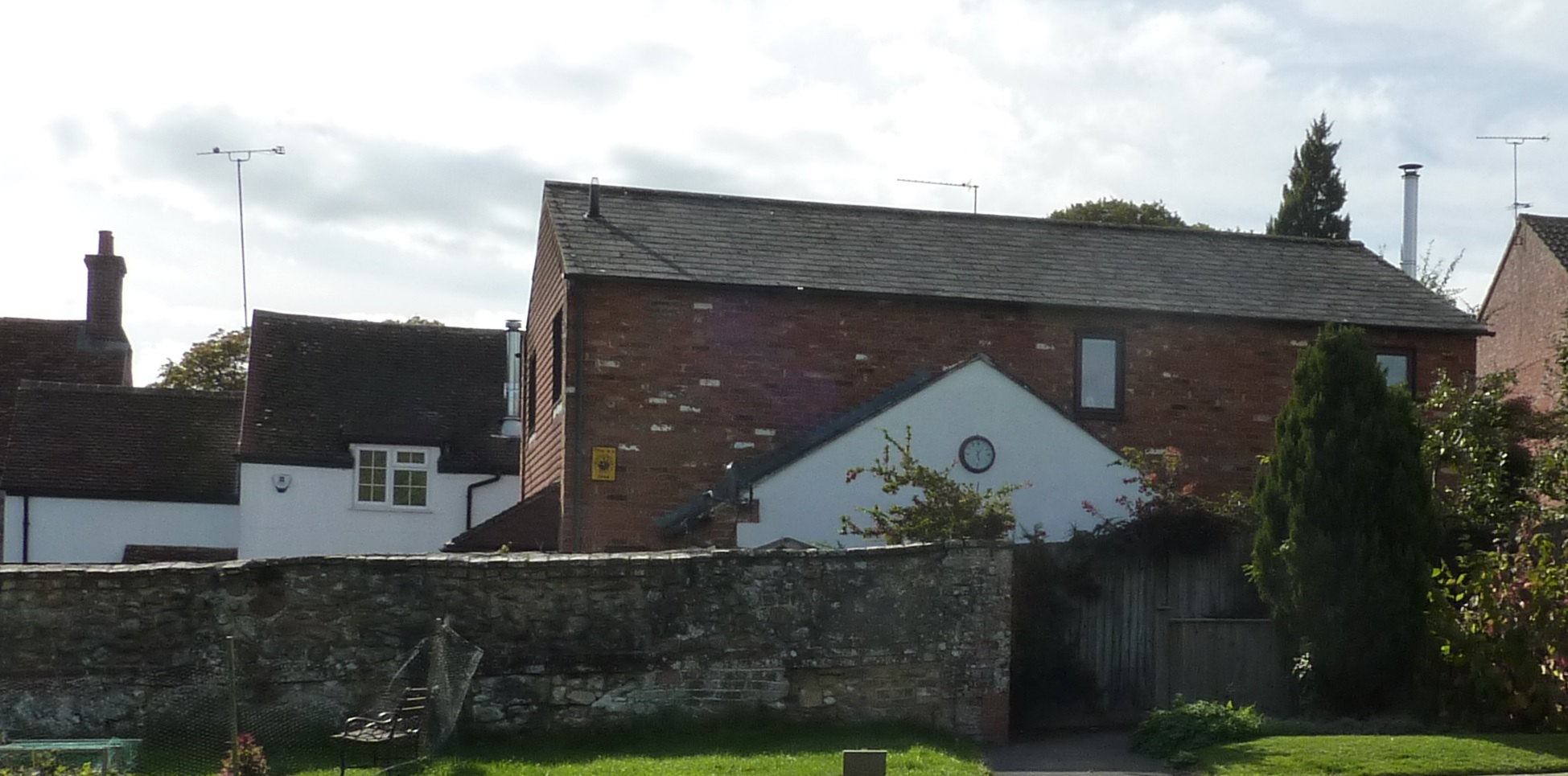
FIGHTING CHARLIE (1965, 1966 Ascot Gold Cup)
QUINTESSENCE (1903 1000 Guineas, Park Hill Stakes, 1902 Molecomb Stakes)
PANDOFELL (1961 Ascot Gold Cup, Yorkshire Cup, Doncaster Cup)
CAWSTON'S PRIDE (1970 Queen Mary, Molecomb Stakes, Lowther Stakes, Cornwallis Stakes)
AMPHION (1890 Champion Stakes, Hardwicke Stakes, Jubilee Stakes)



